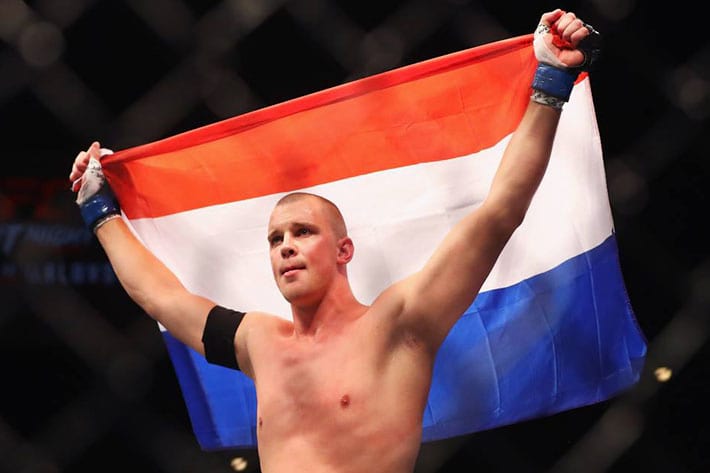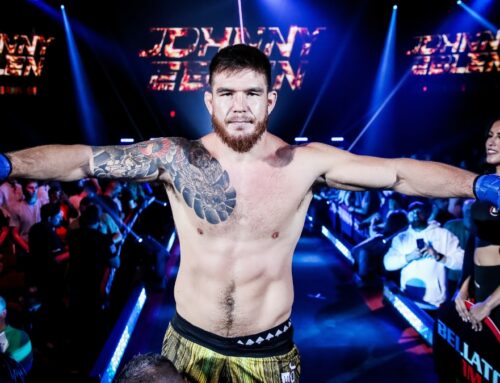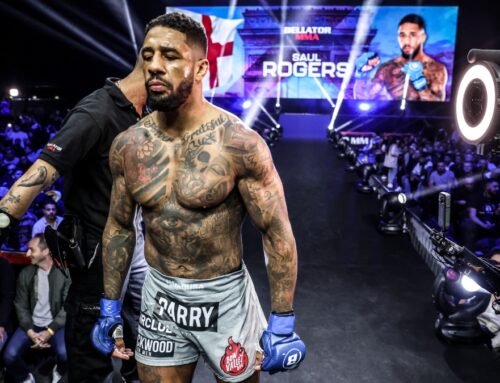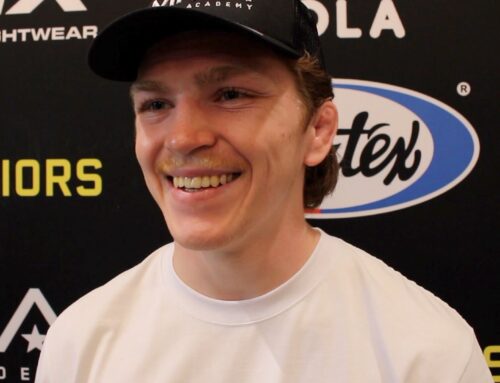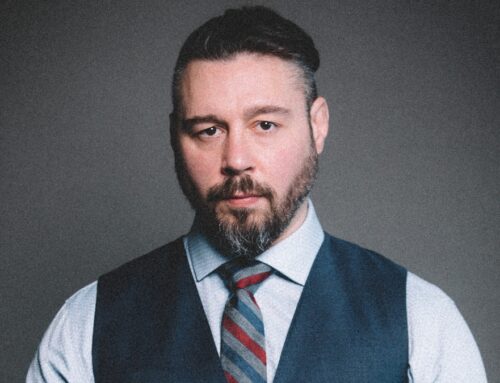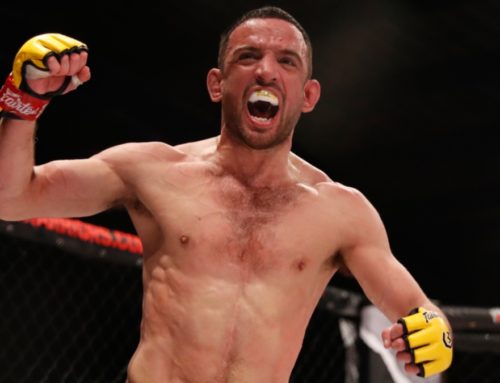Though it was some fifteen years ago now, Stefan ‘Skyscraper’ Struve remembers the first time he went to his local MMA gym and punched bags and pads as if it was only yesterday. He remembers how it felt. How the bags and pads reacted when he hit them. How others in the gym looked up to him – literally. He also remembers how his hands were trembling so much the next day, as a result of his punching exploits, that he was unable to write anything at school. The teachers didn’t understand. They told him off. But Struve, 14, knew exactly why he fell behind that day. He knew, also, that education, and pretty much everything else, would now have to take a backseat.
“I couldn’t believe there was something out there that encouraged kicking and punching in addition to wrestling and jiu-jitsu,” said Struve. “The whole concept was fascinating.”
The assumption, of course, once Struve began towering over classmates around the age of 12, was that he’d gravitate towards the basketball court. It’s where all the tall kids ended up. It seemed perfect for a boy who seemingly couldn’t stop growing. But Struve had other ideas: “Played basketball once,” he said, “and I was useless.”
He tried soccer for a while, playing as a centre-back and winning balls in the air, but then a love of combat sports got a hold of him. He was 14. He’d been watching kickboxing events since the age of ten and had been turned on to PRIDE events by his brother. His brother started training MMA and Stefan followed.
“My brother was also a big inspiration during this time,” said Struve. “He was already training MMA and had even had a couple of fights. So, when I turned fourteen, he decided to take me to the gym and instantly I knew what I wanted to do for the rest of my life.”
Struve had his first amateur fight at the tender age of 16 and turned professional at 17. A young boy in a man’s world, he fought at 185lbs – middleweight – and used his gangly frame to keep older and heavier men at bay.
“I was fearless on the way up,” he said. “My aim was to go in there and kick ass. My first fight was at 185lbs and I fought a guy who was 32 years of age, pretty much twice my age. I knocked him out with a head kick. After that, nobody at 185lbs wanted to fight me, so that’s when I decided to make the move up the weight classes and eventually fight at heavyweight.”
If Struve was still in the formative stages of his pro career, the same could be said of MMA at that time. The UFC, valued nowhere near its eventual $4.2 billion selling price, was still a long way off and Struve, a man now hell-bent on making a living from fighting, knew he’d have to make money in the interim. There could be no other way. Not when 18 and living with parents.
“They have always been very supportive of my dream,” Struve said. “They are my biggest fans, in fact. They are also realists and have guided me when I’ve needed guiding. When I was eighteen they nudged me on the arm and said, ‘Look, Stefan, you’re going to need a job because this MMA thing isn’t going to pay bills.’ That’s when I went and got a job as a bouncer.
“We didn’t really know what the UFC was back then, and it certainly wasn’t as high-profile as it is now. They weren’t scouting talent in Europe back then the way they do now, so people like me were scrapping around on local shows for many years making peanuts.”
Struve’s stint as a nightclub bouncer worked on two fronts. It put pennies in the pocket of a teenager still living with Mum and Dad and it also toughened him up and prepared him for the arduous – regulated – battles to come.
“That was a real eye-opener for me, as many fights would break out while I was at the club,” he said. “You always hoped they wouldn’t – and did your best to prevent them – but alcohol and testosterone is never a good mix. Working the door consisted of lots of late nights and fist fights, though I tried to stop the fights before they got out of hand.”
In the tradition of many Dutch fighters, Struve started out with every intention of settling disputes – inside the ring – by kicking an opponent in the head and knocking them out. He grew up, like most aspiring fighters from the Netherlands, admiring K-1 kickboxers. It was a language that made sense. One spoken by an entire nation.
As his interest grew, however, Struve also discovered a love of jiu-jitsu, and, moreoever, realised his long limbs, ideal for kicking and keeping an opponent out of harm’s way, could also be extremely useful when locking up submission moves.
“My first couple of fights were mainly fought on my feet, and I’d win them via head-kicks or knees in the clinch,” he said. “It was then that opponents started taking me down and forced me to work on my ground game. From that point on, I was all about the ground game and really saw it as a challenge and something I could get good at very quickly. I then started winning a lot of fights by submission.”
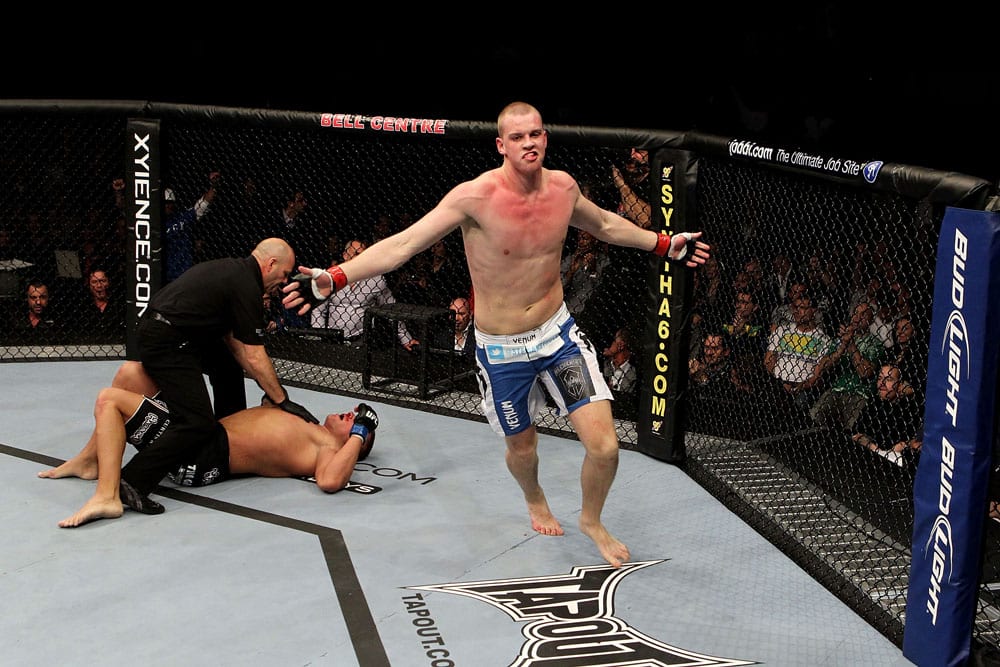
By the time Struve reached the UFC in 2009, he was 16-2 in his MMA career and had filled out into a heavyweight. He was still somewhat on the gangly side, but, at a staggering seven-foot, had no choice but to campaign among the big men of the sport. There were no kid gloves. There was no induction day. Instead, 20-year-old Struve was handed a fight against Junior dos Santos, the future UFC heavyweight champion, in his UFC debut.
“I turned 21 three days before my UFC debut against Junior dos Santos in front of 15,000 British fans,” remembered Struve. “Looking back, it was all a little overwhelming and the occasion definitely got to me. I froze during the fight and didn’t know what to do. Everything I’d learnt over the course of my career was forgotten inside one minute.”
Struve was stopped in 54 seconds of the first round. Startled and then crumpled, he looked out of his depth. It appearered the opportunity had come too soon. But then, in his very next fight, he battled through a mask of blood to submit Denis Stojnic in two rounds in Germany, the start of a three-fight win-streak.
“That fight is a good example of what makes me happy in life,” he said. “It will always put a smile on my face. I showed everybody I could hang in the UFC that night, and also battled back from adversity.
“I knew my back was against the wall and knew I had to stop Denis before the final bell, which I did. The feeling of locking in that choke and winning the fight was unbelievable. Even better was knowing that the fans inside the arena, and everybody watching at home, would have had the time of their lives watching the fight. That matters to me just as much as getting the win.”
Now, eight years later, Struve hasn’t even turned 30 yet boasts a 36-fight professional MMA record that includes on it names like Stipe Miocic, Junior dos Santos, Alistair Overeem, Antônio Rodrigo Nogueira, Mark Hunt, Roy Nelson and Antônio Silva. He’s won fights, lost fights. There have been ups just as there have been downs. He’s been so close, yet so far.
This Saturday (September 2) in Rotterdam, Holland, Struve (26-8) aims to defeat Alexander Volkov and take his latest winning run to three. Do that and he might soon emerge in the UFC heavyweight title picture. Certainly, no one will begrudge him the chance. If anyone has paid their dues and earned it the hard way, it’s the seven-foot skyscraper from Beverwijk.
“I’m probably more experienced and have seen more things than most heavyweights in MMA,” he said. “I’ve won fights by knockout and submission and have also lost fights by knockout and submission. I’ve also fought all around the world, from Siberia to Canada, and have nearly 40 pro fights to my name. Even the best heavyweights in the world can’t say the same.”
Watch UFC Fight Night: Volkov vs. Struve live on BT Sport 2 from 8pm BST on Saturday 2nd September, or watch the Prelims exclusively on UFC Fight Pass from 4:45pm BST

